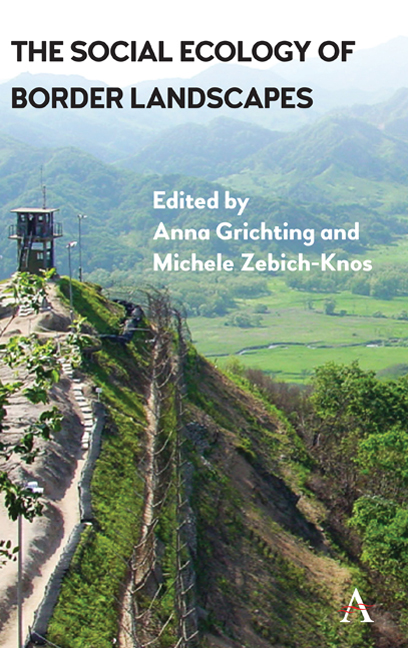Book contents
- Frontmatter
- Contents
- List of Illustrations
- Preface
- List of Contributors
- Introduction: Social Ecologies and Borderlands
- Part I FRAMES: MAPPING SOCIAL ECOLOGIES IN BORDER TERRITORIES
- Part II BRIDGES: RESILIENCE, RESTORATION AND RECLAMATION
- Part III CORRIDORS: CATALYSTS AND COLLABORATION IN CONFINED SPACES
- Part IV PORTALS: DIALOGUE, EXCEPTION AND RETERRITORIALIZATION
- Conclusion: Making Sense of Social Ecology, Borders and the Environment
- Index
Preface
Published online by Cambridge University Press: 10 January 2018
- Frontmatter
- Contents
- List of Illustrations
- Preface
- List of Contributors
- Introduction: Social Ecologies and Borderlands
- Part I FRAMES: MAPPING SOCIAL ECOLOGIES IN BORDER TERRITORIES
- Part II BRIDGES: RESILIENCE, RESTORATION AND RECLAMATION
- Part III CORRIDORS: CATALYSTS AND COLLABORATION IN CONFINED SPACES
- Part IV PORTALS: DIALOGUE, EXCEPTION AND RETERRITORIALIZATION
- Conclusion: Making Sense of Social Ecology, Borders and the Environment
- Index
Summary
The idea for this book came out of the 2011 Conference on Environmental Diplomacy and Security in International Relations organized by the Institute for Environmental Diplomacy and Security (IEDS) at the University of Vermont (USA). Burlington, Vermont, is a small city nestled in the Vermont heartland and is also home to the founder of social ecology, Murray Bookchin. At the time, the university was also home to professor and IEDS director Saleem Ali, author of the highly acclaimed book Peace Parks: Conservation and Conflict Resolution. Without his encouragement and support, The Social Ecology of Border Landscapes would surely not have materialized. I should add that these inspirational events, institutions and scholarship took place within very idyllic local surroundings. Vermont borders Quebec, Canada, and, in Burlington, I found French-Canadian influences everywhere, from the food (poutine) to the bilingual, English-French language signs at the airport.
While certainly different from my current living arrangement near the Pacific Ocean in Southern California, the area and the conference sparked my interest in creating a book about borders and their relation to both the built and natural environments, but it was Anna Grichting's actions that turned this idea into reality. Selection for our conceptual framework was obvious — we would approach the topic from a social ecology perspective to illustrate that scholars and practitioners must never lose sight of the human drivers that shape borders, whether they abut a peace park, desert, fence or refugee camp. The book would be multidisciplinary and incorporate my perspective as a political scientist with Anna's expertise in architecture and planning. Naturally, it would include scholars and practitioners whose background and knowledge base are different from our own. It would also challenge readers to think out of the box — which is why we felt compelled to include a cognitive-border case (Chapter 11) devoid of physical frontiers, but able to increase awareness that psychological barriers often result from conflict and serve as coping mechanisms.
One of my favorite natural environments in Southern California is the Tijuana Estuary National Wildlife Refuge and Tijuana Slough, a salt marsh plain with tidal channels that extends south from San Diego to the Mexican border.
- Type
- Chapter
- Information
- The Social Ecology of Border Landscapes , pp. ix - xPublisher: Anthem PressPrint publication year: 2017



